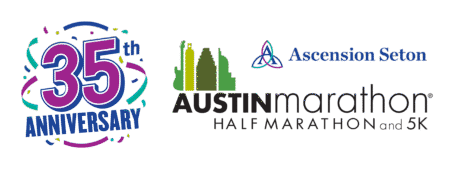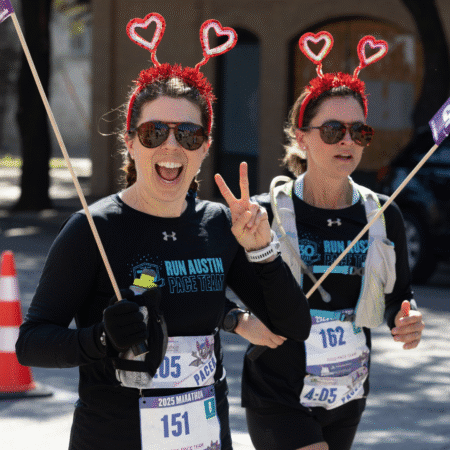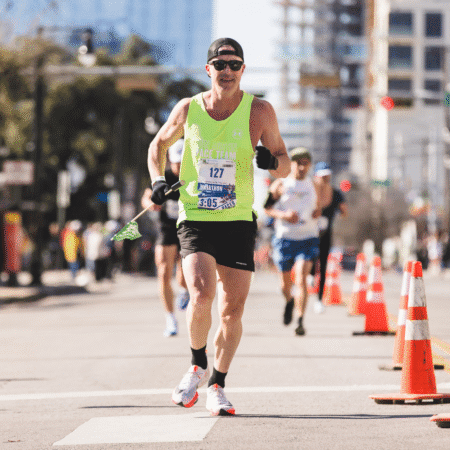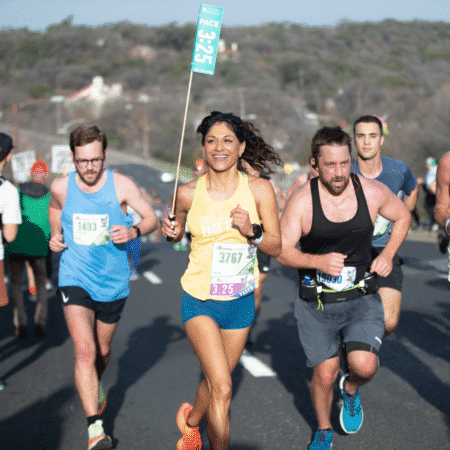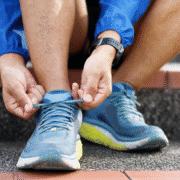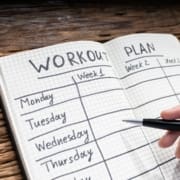Everything you need to get started—and keep running—all the way to the Austin Marathon!
You’ve decided to start running—welcome to the club! Whether you’re training for your very first 5K or dreaming about crossing the finish line of the Austin Marathon, you’re in the right place. Running can truly transform your life, but like any great adventure, preparation makes all the difference.
Here’s your go-to Beginner Runner Checklist, packed with essential tips, practical gear, and a dash of Austin flair to boost your confidence and keep you motivated.
1. Find the Perfect Running Shoes
Your running shoes are your foundation. The right pair makes all the difference!
- Visit a local running store— Fleet Feet Austin is our go to store for personalized gait analysis.
- Prioritize comfort over style. Your knees and feet will thank you!
- Break them in gradually. NEVER wear new shoes for the first time on race day.
2. Invest in Comfortable Running Gear
Say goodbye to cotton and hello to moisture-wicking, breathable apparel to stay cool and comfortable.
Essentials:
- Technical running shirts and shorts/tights (to avoid chaffing)
- Specialized running socks (yes, they matter!)
- A running belt to carry your items – SPIbelt is our favorite for holding small items
- Layers suitable for Austin’s unpredictable weather
3. Choose a Manageable Training Plan
Pick a realistic goal and build your endurance step-by-step. Dreaming big? Start small and keep moving forward.
Favorites:
- For getting started check out the Couch to 5K apps
- Official marathon training programs- Check out The Run Plan for personalized plans
- Austin Runners Club and other local run groups for motivation and community support
4. Master Your Hydration Strategy
Staying hydrated is crucial, especially in Austin’s heat and humidity.
Consider:
- Handheld water bottles
- Hydration belts or vests
- Routes near water sources—Lady Bird Lake Trail is a local favorite!
5. Boost Motivation with Music and Podcasts
The right soundtrack can transform challenging runs into exhilarating experiences.
Pro Tip: Create a special race-day playlist and save it exclusively for long training runs. It’s like having your personal pep rally!
6. Track Progress with Running Apps and Watches
Monitor your distance and pace to celebrate your achievements and track your growth.
Recommended Tools:
- Strava (connect with other Austin runners & follow the Official Austin Marathon Page)
- Nike Run Club or MapMyRun
- GPS watches from Garmin or Coros for data enthusiasts
7. Prioritize Sun Protection and Safety Gear
In sunny Austin, sun safety is non-negotiable—even on cloudy days.
Must-haves:
- SPF 30+ sweat-resistant sunscreen
- Hat/ visor & don’t forget the sunglasses
- Reflective gear or lights for early-morning or evening runs
8. Essential Recovery Gear
Your recovery routine is just as important as your run.
Stock your toolkit with:
- Foam rollers or massage guns
- Epsom salts for muscle relief
- Post-run snacks with balanced carbs and protein (breakfast tacos, anyone?)
9. Set a Race Goal
Few things motivate like a race date on your calendar. Whether aiming for a 5K or 26.2 miles, a tangible goal keeps your training purposeful and exciting.
Our pick?
Austin Marathon, Half Marathon & 5K: February magic filled with live music, enthusiastic spectators, and an unforgettable finish line festival.
10. Find Your Inspiring “Why”
Knowing your motivation keeps you going on tough days. Whether it’s improved health, stress relief, supporting a cause, or personal achievement—write it down, revisit often, and stay inspired.
Final Thought
Starting something new might feel daunting, but you’re never alone. Austin’s running community is welcoming, vibrant, and ready to support your every step. Follow this checklist, lace up, and soon you’ll cross the finish line on Congress Ave—proud, strong, and inspired.
You’ve got this—and we’ve got your back!
Want more running tips, Austin routes, or beginner-friendly race guides? Follow our blog and stay connected on your path to Austin Marathon greatness!
